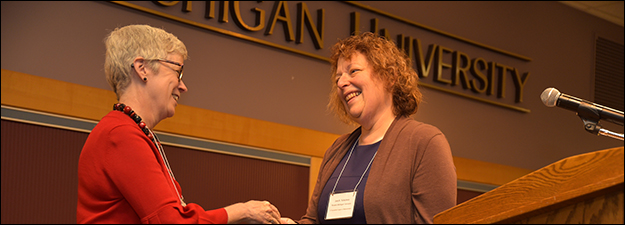Gower's Afterlives
Sponsoring Organization(s)
John Gower Society
Organizer Name
Brian Gastle
Organizer Affiliation
Western Carolina Univ.
Presider Name
Steele Nowlin
Presider Affiliation
Hampden-Sydney College
Paper Title 1
Textual Revenants: The Emperor, the Masons, and Gower's Tomb
Presenter 1 Name
Kara L. McShane
Presenter 1 Affiliation
Ursinus College
Paper Title 2
Chitre, Jargoune, or Seie? Gower’s Birds and Twenty-First Century Biotranslation Theory
Presenter 2 Name
Andrea Schutz
Presenter 2 Affiliation
St. Thomas Univ.
Paper Title 3
Gower and Eighteenth-Century Literary Culture
Presenter 3 Name
R. F. Yeager
Presenter 3 Affiliation
Univ. of West Florida
Start Date
11-5-2017 1:30 PM
Session Location
Schneider 1330
Description
This session explores the literary and cultural legacy of John Gower through his “afterlives,” conceived in the broadest terms. Possible subjects include physical survivals of his texts (manuscripts and early printed editions); his stories (borrowed, excerpted, variously transformed, e.g., late medieval Iberian prose translations, Pericles, Greene’s Vision), or the figure of Gower himself (e.g., Southwark tomb and other representations, historical fiction past and present, digital media). Possible questions include: How can our approaches to Gower’s “afterlives” extend into other languages? What conceptual models might performance studies, dramaturgy, or medievalism bring to our understanding of Gower's works? Can the history of Gower’s reception across time, languages and media transform how we think about canon formation, performance theory, or world literature paradigms?
Brian Gastle
Gower's Afterlives
Schneider 1330
This session explores the literary and cultural legacy of John Gower through his “afterlives,” conceived in the broadest terms. Possible subjects include physical survivals of his texts (manuscripts and early printed editions); his stories (borrowed, excerpted, variously transformed, e.g., late medieval Iberian prose translations, Pericles, Greene’s Vision), or the figure of Gower himself (e.g., Southwark tomb and other representations, historical fiction past and present, digital media). Possible questions include: How can our approaches to Gower’s “afterlives” extend into other languages? What conceptual models might performance studies, dramaturgy, or medievalism bring to our understanding of Gower's works? Can the history of Gower’s reception across time, languages and media transform how we think about canon formation, performance theory, or world literature paradigms?
Brian Gastle

